Versuchen GOLD - Frei
DON'T FEAR THE BERMUDA TRIANGLE
Muse Science Magazine for Kids
|April 2022
"I don't know where we are...both my compasses are out." This was one of the last radio messages that US Navy Lt. Charles C. Taylor ever sent. He had been out on a routine training mission with his students, flying in a group of five planes over the ocean off the Eastern coast of Florida on December 5, 1945. They never returned. No trace of the men or any of their planes was ever found.
-

Two decades later, an article about their disappearance introduced the idea of the Bermuda Triangle. This triangular area of ocean is roughly the same size as Alaska, and connects points at Bermuda, Puerto Rico, and Miami, Florida. Different sources estimate that anywhere from dozens to hundreds of ships and planes have crashed or sunk here. Countless fascinating theories try to explain why. Some blame UFOs, the lost city of Atlantis, or hidden dimensions of spacetime. Others have more scientific-sounding theories about rising bubbles of gas or freak storms called microbursts.
All these theories miss one important thing: Is there a pattern here that needs explaining? Maybe not.
Tigers in the Grass
It's a scientist's job to come up with explanations for mysteries. But before a scientist thinks up and tests theories, they must rule out something called the null hypothesis. This is a fancy term for the idea that there's nothing to explain—there's no pattern, and no mystery. Whatever seemed mysterious was merely random coincidence.
Diese Geschichte stammt aus der April 2022-Ausgabe von Muse Science Magazine for Kids.
Abonnieren Sie Magzter GOLD, um auf Tausende kuratierter Premium-Geschichten und über 9.000 Zeitschriften und Zeitungen zuzugreifen.
Sie sind bereits Abonnent? Anmelden
WEITERE GESCHICHTEN VON Muse Science Magazine for Kids

Muse Science Magazine for Kids
ANIMAL FIREFIGHTER TO THE RESCUE
Can animals help manage the risks of deadly wildfires?
3 mins
Muse July 2025: The Story Behind Wildfires

Muse Science Magazine for Kids
FIRE DANGER
WHY THE RISK OF WILDFIRES KEEPS GROWING
4 mins
Muse July 2025: The Story Behind Wildfires
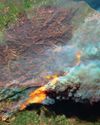
Muse Science Magazine for Kids
The Miller NEW Normal
WHAT TODAY’S WILDFIRES TELL US ABOUT OUR FUTURE
8 mins
Muse July 2025: The Story Behind Wildfires
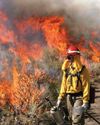
Muse Science Magazine for Kids
WOMEN AND FIREFIGHTING: A GOOD FIT
Jessica Gardetto is a firefighter. Her father was, too. “I grew up with my dad coming home smelling like wildfire and covered in soot,” she says.
1 min
Muse July 2025: The Story Behind Wildfires
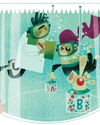
Muse Science Magazine for Kids
What is happening on your fingertips when they get all wrinkly in a hot tub?
—Felix G., age 10, Montana
1 mins
Muse July 2025: The Story Behind Wildfires

Muse Science Magazine for Kids
WHEN the SMOKE CLEARS
THE LINGERING EFFECTS OF THE RECENT PACIFIC PALISADES AND ALTADENA EATON FIRES
6 mins
Muse July 2025: The Story Behind Wildfires

Muse Science Magazine for Kids
PICKING TEAMS
Keep it fair with a strategy that relies on geometry.
2 mins
Muse July 2025: The Story Behind Wildfires
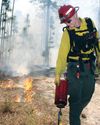
Muse Science Magazine for Kids
SHAN CAMMACK
WILDLIFE BIOLOGIST AND FIRE SAFETY OFFICER
3 mins
Muse July 2025: The Story Behind Wildfires
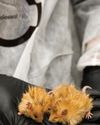
Muse Science Magazine for Kids
Scientists Create Mice With Woolly Mammoth-Like Fur
RESEARCHERS AT A COMPANY IN TEXAS ARE WORKING TO CREATE A LIVING ANIMAL THAT RESEMBLES THE EXTINCT WOOLLY MAMMOTH. Recently, they produced mice with traits of the large mammal. The mice all have coats with mammoth-like fur, and some of the small mammals also have genes that help them store fat. Both features would help the animals survive in the cold Arctic, where the woolly mammoth once lived.
1 min
Muse July 2025: The Story Behind Wildfires

Muse Science Magazine for Kids
Cool Sunshade Added to the Nancy Roman Space Telescope
THE NANCY ROMAN SPACE TELESCOPE IS A NEW TELESCOPE THAT NASA IS BUILDING AND WILL LAUNCH INTO SPACE, LIKELY IN EARLY 2027.
1 min
Muse July 2025: The Story Behind Wildfires
Translate
Change font size
